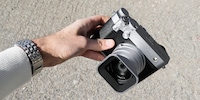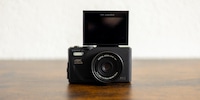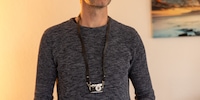

Do cheap compact cameras make a good gift?
A point-and-shoot camera is a great gift idea for older children. But it must meet some minimum standards. Beware of models that don’t.
Cheap compact cameras are passé. Nowadays, your smartphone takes better pictures. But there are still point-and-shoot cameras on the market for under 150 francs or euro. And they sell quite well too, especially around Christmas. Do they, for instance, make a good gift for a child who doesn't yet have a smartphone?
There are actually special children’s cameras. They typically come in loud colours, are robust and are supposed to be easy for children to use. But I’m certain that, at the latest, a ten-year-old can handle a simple adult camera.
I tested two such compact cameras: one very cheap model and one that’s a bit pricier.
The brand Sony doesn’t require explaining, but here’s some background on the brand Agfa. Agfa was once a large manufacturer of photographic film and also manufactured cameras – akin to Kodak. But those times are long gone. Agfa is now mainly active in the print and medical sectors. Today, cameras sporting the «Agfa» name have nothing to do with this company. They’re made by Agfa Holding GmbH, a company based in Grünwald, Germany, which owns licensing rights to the Agfa name.
First impressions
Both cameras appear quite similar at first glance. Both of them are eerily light. The Sony W830 weighs 117 grammes with the battery, the Agfa DC5200 just 104 grammes. They’re both unusually red, offer a resolution of about 20 megapixels and 8x zoom.
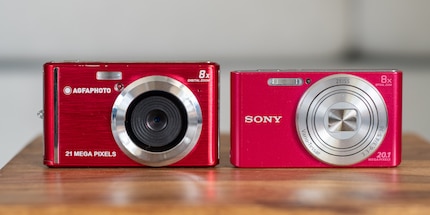
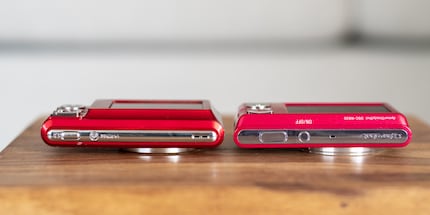
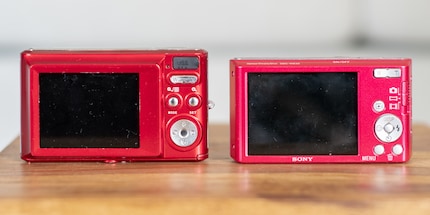
And that’s where the similarities end. The Agfa DC5200 only has a digital zoom. This means that when you zoom in to photograph a small or distant subject, only the pixels are enlarged. This causes the image to become less sharp.

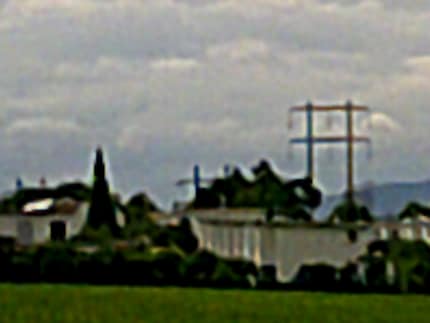
The optical zoom, on the other hand, actually reveals more details. You can see this in the test shot taken with the Sony W830:


Agfa DC5200
The Agfa DC5200 comes with a USB cable, but no power adapter. To charge it, you have to connect the camera to your computer or plug it into an adapter you already own. As with most cameras, a memory card is not included.
Right after unpacking it, I take a selfie to make sure the camera works. Two things immediately stick out like a sore thumb:
- The focus is totally off – the background is sharp (well, as sharp as it can be), while my face is blurred. Hey, at least it hides my wrinkles.
- The bright areas on my face (forehead, bridge of the nose, right cheek) are overexposed. It’s a bright monolith – no texture, no details. And these areas weren’t even all that bright in real life, as the photo was taken without flash. What this shows is that the camera’s sensor can only handle very small differences in brightness.

After a few more shots, I realise that the camera didn’t actually focus incorrectly; it didn’t focus at all. It’s incapable of adjusting to different distances. It has a fixed focus. Like a Nokia cell phone from 2007. As a result, objects are always out of focus at short distances and always sharp at longer distances. The threshold seems to be around 30 centimetres, but I can’t even say that for sure because the camera is incapable of producing sharp images as a rule.
This brings us to this camera’s biggest problem. It’s not just the zoom images that look like unidentifiable mush. Even without the zoom, photos lack all sharpness and detail. Optimal lighting conditions don’t fix the issue, either.
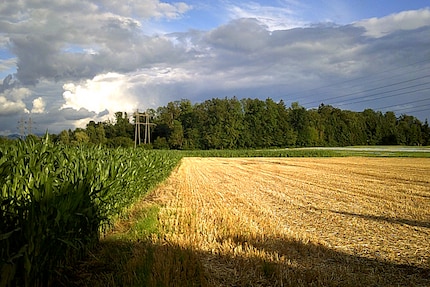
Although the camera sensor has 21 megapixels, the image size is set to 5 megapixels ex-factory. This is strange and can really only have one explanation. Namely, that the 21 megapixels are useless. Indeed, after switching to the maximum resolution, I don’t notice any difference.
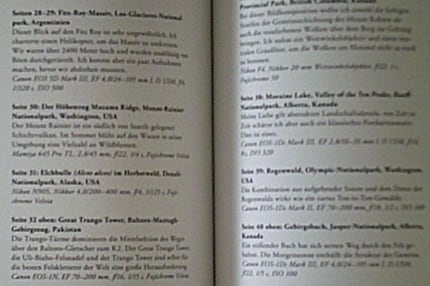
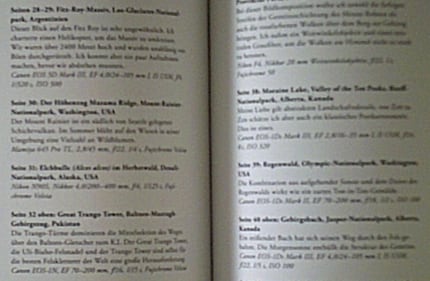
The images shown above are just snippets of the full photos, but the 5-megapixel shot still has a resolution of 1073 × 714 pixels, which should suffice for the text to be legible. To put it bluntly: the lens is so bad that it can’t even reproduce 5 megapixels. And then the camera applies a digital zoom on top of the already horrendous original image.
In view of these shortcomings, it’s hardly worth going into any more detail about this camera. Here’s a short list of negatives:
- Horrible menu design.
- The camera doesn’t switch to shooting mode when you press the shutter button.
- There's no image preview after you take a photo.
- There's no speaker. You can’t hear the videos you shoot.
- There's extreme motion blur (rolling shutter).
- The zoom is jerky, which is annoying when recording video.
- The red colour began flaking off on day two.
- And, of course, there are no even semi-advanced features: no touchscreen, no RAW format, no manual selection of aperture and shutter speed.
Sony DSC-W830
The Sony DSC-W830 is from the year 2014. So, what you get is a new device with seven-year-old technology. But this isn’t as bad as it sounds. There hasn’t been much development in the field of affordable compact cameras in the past seven years. To my knowledge, there’s still no successor model to the Sony DSC-W830. The camera comes with a USB cable and power adapter.
It costs significantly more than the Agfa – between two and three times as much, depending on the colour and day. But it’s definitely worth the higher price tag. Unlike the Agfa DC5200, this camera is actually functional.
The lens delivers the necessary resolution, so the same text I photographed with the Agfa DC5200 comes out legible.
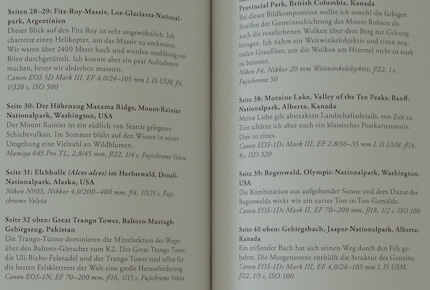
Image quality on the Sony DSC-W830 is superior to the Agfa DC5200 in every respect.



The Sony is easy to use for beginners. Its intelligent auto-mode detects whether you’re taking a macro, landscape or other shot and adjusts the settings accordingly. There's also an «easy mode» that offers a simplified display with large font.
You can focus the camera before actually taking a picture, though finding the corresponding pressure point takes some trial and error. It might be difficult at first for a child to press the shutter button only halfway without triggering a shot. Because the autofocus isn’t the fastest, this can result in blurry images.
The Sony DSC-W830 is a classic point-and-shoot camera: just point it at your subject and press the shutter button. There’s no option to manually set the aperture or shutter speed. The focus is also automatically adjusted, though it does have an object tracking function.
In dim lighting, the gap in quality between the DSC-W830 and good cameras – or even current smartphones – becomes apparent. In sunshine, however, it’s perfectly possible to take nice pictures.
Verdict: don’t skimp
There’s a huge difference in quality between the cheap and super cheap. Agfa cuts costs where it really matters. As a result, the Agfa DC5200 is plain bad in every respect. It’s practically impossible to get a good picture out of it. If you give it to a child, it’ll permanently ruin photography for them.
The Sony CyberShot W830 costs considerably more, but is a camera worthy of the name. It lets you take nice, sharp pictures. And it’s easier to use. It comes into question as a gift.
100 francs or euros get you something usable. 50 francs don’t. If you really don’t want to spend that much, the used market may be worth looking into. In terms of performance, just about any device from a reputable brand is bound to be better than the Agfa DC5200. Still, be sure to examine any camera before purchasing it. A device with signs of use doesn’t make for the best gift. In addition, the battery in old cameras is often weak. Good replacement batteries tend to be disproportionally expensive or no longer available at all. For these reasons, if you’re not a seasoned camera aficionado, I advise against buying a second-hand model as a gift.
My interest in IT and writing landed me in tech journalism early on (2000). I want to know how we can use technology without being used. Outside of the office, I’m a keen musician who makes up for lacking talent with excessive enthusiasm.

